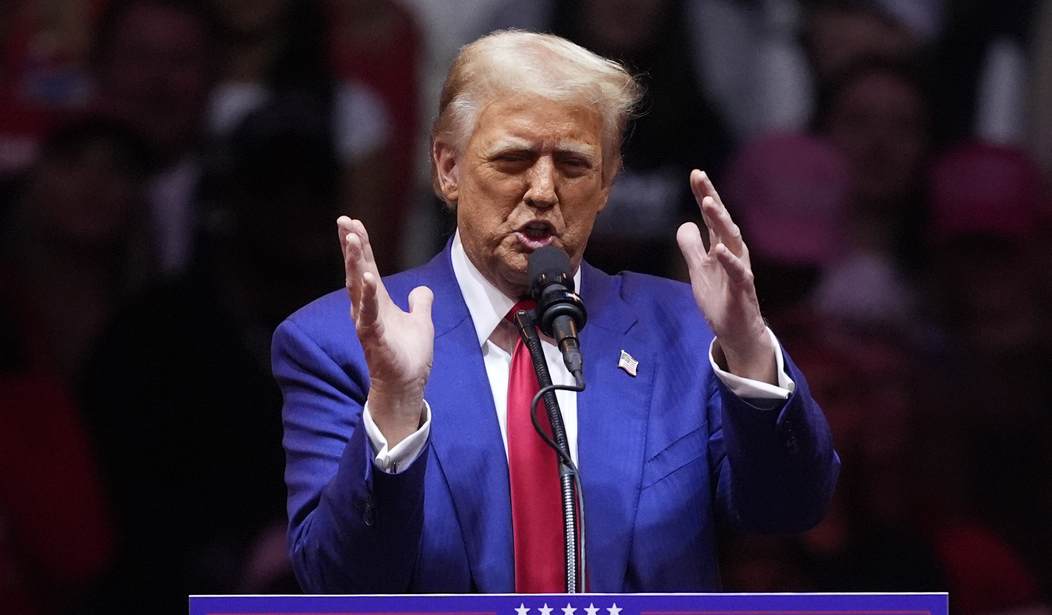CNN released some new polls of the blue wall states today and the results look like good news for Kamala Harris.
In Michigan, Harris holds a lead over Trump by 48% to 43% among likely voters. Harris also leads Trump in Wisconsin, where 51% support her to 45% for Trump. But the race is tied in Pennsylvania (both with 48% support), the largest electoral prize of the three states and a central piece of either candidate’s hopes of winning the White House. All three states broke in Trump’s favor in 2016, but President Joe Biden won them in 2020...
The overall results are nearly identical to the last round of CNN polling in these three states, conducted in late summer, when Harris led Trump by 50% to 44% in Wisconsin and 48% to 43% in Michigan, with Harris and Trump tied at 47% in Pennsylvania.
Points for consistency, but there are other polls out this week which seem to point to a very different race. For instance:
A new poll of likely Michigan voters by Suffolk University/USA Today showed a tie race going into next Tuesday’s presidential election between Republican former President Donald Trump and Democratic Vice President Kamala Harris...
The new poll showed Trump ahead of Harris 47.4% to 47%, well within the survey’s margin of error of plus or minus 4.4 percentage points. In this poll of 500 Michiganders, the difference represents just two voters.
Those results were similar to the results in an Emerson poll released yesterday which also showed a very tight race where Trump seemed to have a narrow edge.
A new Emerson College Polling/RealClearWorld survey of Michigan voters finds 49% support former President Donald Trump, and 48% support Vice President Kamala Harris for president in 2024. Two percent are undecided and 1% plan on voting for a third party.
The Emerson poll matched almost exactly with an Atlas Intel poll of Michigan which put the race at Trump 49.3% to Harris 48.1%.
If you step back and look at the average of recent polls in Michigan, Real Clear Polling has Harris up by 0.5% and FiveThirtyEight has her up 0.7%. It looks like both of those results don't include the new CNN polling with Harris up by 5%, so that should shift things in her favor a bit more.
Of course the margin of error in each case (3-5% depending on the poll) means that these polls are reconcilable. CNN could be overestimating Harris a bit and Emerson could be underestimating her a bit. The truth could be somewhere in between, which is what the poll averages are meant to show, i.e. a tight race with Harris holding a narrow lead.
Still, I can't help but wonder if the polls are gravitating to two different points. One set (CNN, Susquehanna, Quinnipiac) shows Harris ahead by 4 or 5 and another set showing her tied or down a point. Maybe one set of pollsters is going to be close to the final result and the other set is going to be off by 4-5 points. But if so which one? Trump has definitely been underestimated before (twice) but that's no guarantee it will happen again.
No doubt we'll have several more polls to consider before the end of the week. Maybe those will help clarify what is happening.
Update: NBC News has an article about the phenomenon of "herding" and how it might be impacting polls.
Actual swing state polls show far less variation than the benchmarks we would expect in a perfect polling world. Across the 321 polls in the seven swing states, only 9 polls (3%) report a margin greater than 5 points. Even if every race was tied — which they are not — we would still expect to see around 32 of the 321 polls with more than a 5-point margin due to randomness.
Visualizing how the reported polling margins compare to what we would expect in a perfect polling world strongly suggests “herding” of swing state polling margins around the statewide polling averages. In these 321 state polls, 69 of them (21%) report an exact tie and 124 polls (39%) report a margin that is 1 percentage point or less. Both of those figures are roughly double what we would expect in a perfect polling world where the only source of variation is the random selection of voters who respond.
Pennsylvania is perhaps the most troubling state. Fully 20 out of 59 polls there (34%) show an exact tie and 26 (44%) show a 1-point margin or less And even though there is a 15% chance that a truly tied race could produce a poll with more than a 5-point margin due to randomness, we see only 2 of 59 Pennsylvania polls (3.3%) with a margin greater than 5 points...
The fact that so many swing state polls are reporting similar close margins is a problem because it raises questions as to whether the polls are tied in these races because of voters or pollsters. Is 2024 going to be as close as 2020 because our politics are stable, or do the polls in 2024 only look like the results of 2020 because of the decisions that state pollsters are making? The fact that the polls seem more tightly bunched than what we would expect in a perfect polling world raises serious questions about the second scenario.
The polling we're seeing doesn't look like the sort of random variation you'd expect in a tied race. But at this point, if pollsters have artificially smoothed out the variation because of past embarrassments, we won't know what they got wrong this time until next week.








Join the conversation as a VIP Member